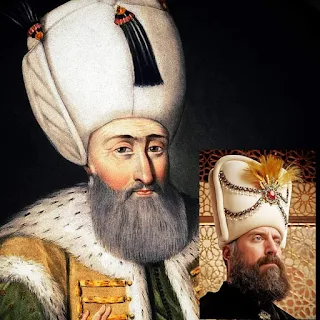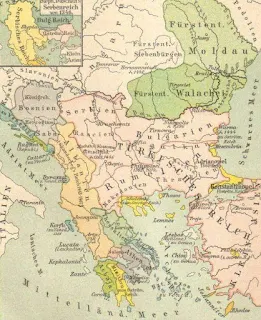Suleyman I was born on April 27, 1495, Monday in Trabzon. His father was Sultan Selim I and his mother was Hafsa Sultan.
Suleyman was a tall man with a round face, hazel eyes on a broad forehead, and a thin beard.
Suleyman the Magnificent had ruled for forty-six years (1520-1566) and this was an unforgettable royal period when it reached a stage of unprecedented magnitude and prosperity.
often referred to by European writers as "great" or "the magnificent". But native historians refer to him as "lawgiver"(Kanuni), "the King of his century" and "completion of the perfect ten".
His father, Sultan Selim, focused on Suleyman's education, his first education from his grandmother Gulbahar Hatun.
When he was seven years old, he was sent to Istanbul near his grandfather Sultan Bayezid II where he was educated by the famous scholar Karakızoglu Hayreddin Hızır Efendi.
He studied literature, history, science, and theology with the lessons of war techniques and tactics.
After that, he went to his father in Trabzon and stayed there until he was 15 years old. At the age of 15, Suleyman wanted to be governor and he was sent to the province of Sarki and then to Karahisar and Bolu, and later to Keefe.
After Sultan Selim I ascended the throne in 1512, Shehzade Suleyman was invited to Istanbul as his father's regent Selim who was struggling with the throne and his brothers.
At the same time, he was the governor of Saruhan province. After Selim's death, Suleyman succeeded him as he was known to be a courageous and confident man. He did not hesitate or disobey his orders.
He obliged people according to their abilities and capacities. He died on September 7, 1566, at the age of 71, when he was on the siege of Sziget. Because he made written laws and applied them strictly he was called 'Lawgiver'.
He was a very kind ruler, a very just man, and he never oppressed his people. For example; he got the tax from Egypt very much and had done research when he found out that the people were overcharged, and he found out that the governor had treated them badly, so he immediately changed the governor.
Suleyman promoted arts, culture, science, and poetry. he was also a poet. Suleyman's poems are among the foremost poems in the Islamic world.
Suleyman sponsored a group of artists, theologians, and philosophers who surpassed Europe's most educated courts.
Süleyman the Magnificent had a beautiful and radiant face, dark brown eyes, a ram's nose, and a thick and long mustache.
His chest wide and his arms long and muscular. He was like a lion with good things and a good voice. He was brave, determined, and strong, and he was blessed with good luck and good fortune with himself and those around him.
THE POWER OF ISLAM GOLDEN ERA AND THE VICTORIOUS OF SULTAN SULEIMAN KHAN.
Sultan Suleiman, also known as Suleiman the Magnificent, achieved many notable war victories during his reign as the Ottoman Empire's tenth Sultan, from 1520 to 1566.His time are the biggest Islam territorial expansion and evading more Europe land that expand the Islam religious on hole world.
The map early Islam expansion and the conqueror times of sultan Suleiman landing region map 🗺️
Here are some of his major military triumphs:
1. The Capture of Belgrade (1521): This was Suleiman's first major military operation as Sultan. He led an army of around 300,000 soldiers and captured the fortress of Belgrade, a key strategic point between the Ottoman Empire and Hungary.
2. The Battle of Mohacs (1526): This was a significant victory for Suleiman, as he defeated the Hungarian army and killed their King, Louis II. This victory led to the Ottoman Empire's expansion into Hungary and its eventual annexation.
3. The Siege of Rhodes (1522): This was one of Suleiman's longest and most challenging military operations.
He led an army of around 100,000 soldiers to capture the island of Rhodes, which was defended by a small force of Knights Hospitaller. After a lengthy siege, the Knights surrendered, and Suleiman gained control of the island.
4. The Conquest of Baghdad (1534): Suleiman's campaign against the Safavid Empire resulted in the capture of Baghdad. This victory marked the Ottoman Empire's expansion into Iraq and increased its influence in the Middle East.
5. The Battle of Preveza (1538): Suleiman's naval fleet defeated the combined forces of the Holy League, consisting of Spain, Venice, and the Papal States.
This victory secured Ottoman dominance in the eastern Mediterranean and allowed for uninterrupted trade and commerce.
Overall, Suleiman was a highly successful military leader and his victories significantly expanded the Ottoman Empire's territories and influence.


Comments
Post a Comment